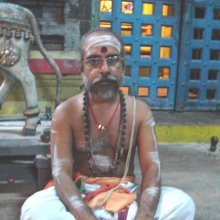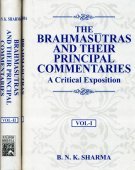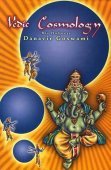Adhikarin, Adhikari, Adhikāri, Adhikārin: 25 definitions
Introduction:
Adhikarin means something in Buddhism, Pali, Hinduism, Sanskrit, Jainism, Prakrit, the history of ancient India, Marathi. If you want to know the exact meaning, history, etymology or English translation of this term then check out the descriptions on this page. Add your comment or reference to a book if you want to contribute to this summary article.
Images (photo gallery)
In Hinduism
Mīmāṃsā (school of philosophy)
Source: Srimatham: Mīmāṃsa: The Study of Hindu ExegesisAdhikāri (अधिकारि) refers to one of the four criteria every Tantric or Yogic text must include.—Adhikāri the qualifications of the individuals to whom the text is addressed.

Mimamsa (मीमांसा, mīmāṃsā) refers to one of the six orthodox Hindu schools of philosophy, emphasizing the nature of dharma and the philosophy of language. The literature in this school is also known for its in-depth study of ritual actions and social duties.
Vedanta (school of philosophy)
Source: Swami Krishnananda: Brahma SutrasAdhikarin refers to “one who is competent to understand and study the Sastra”.—The Adhikarin is one who is of tranquil mind and has the attributes of Sama (quietude), Dama (self-control), etc., is full of faith, is constantly engaged in good thoughts and associates with the knowers of Truth, whose heart is purified by the due discharge of all duties, religious and secular, and without any idea of reward

Vedanta (वेदान्त, vedānta) refers to a school of orthodox Hindu philosophy (astika), drawing its subject-matter from the Upanishads. There are a number of sub-schools of Vedanta, however all of them expound on the basic teaching of the ultimate reality (brahman) and liberation (moksha) of the individual soul (atman).
Shaivism (Shaiva philosophy)
Source: archive.org: The Parakhya TantraAdhikārin (अधिकारिन्) (lit. “engaged in office”) refers to a title of Śiva which is applied when he “teaches the Rudras and others their duties”, according to the Parākhyatantra 2.96-99.—Accordingly, “the supreme Śiva is the same as the Lord who resides in a body; the Lord is both sakala and niṣkala (transcendent/devoid of divisions); He is the cause of creation, maintenance, destruction and grace. When He is sakala, He is called ‘engaged in office’ (adhikārin); he teaches the Rudras and others their duties; but the categorisation of the Lord as ‘engaged in office’ (adhikarin), ‘engaged in experience/enjoyment’ (bhogin), and ‘in resorption’ (layin) is not ultimately real. Śiva’s bestowing His grace depends on the transmission of His scripture (śāstra) from ācārya to pupil [...]”.
Source: SOAS University of London: Protective Rites in the Netra TantraAdhikārin (अधिकारिन्) refers to “authority”, according to the Netratantra of Kṣemarāja: a Śaiva text from the 9th century in which Śiva (Bhairava) teaches Pārvatī topics such as metaphysics, cosmology, and soteriology.—Accordingly, [verse 2.22cd-28ab]—“From this authority (adhikārin), the seventy-million mantras arise. The terminal letter shining with various light, [which is the] split belly of the moon [j], is placed upon a hook [u], and yoked with the last rising horizon [i.e., the wind or last labial nasalization] [ṃ]. That which is described is celebrated in the world as the supreme Amṛta [sa], this is the highest dwelling place. [...]”.

Shaiva (शैव, śaiva) or Shaivism (śaivism) represents a tradition of Hinduism worshiping Shiva as the supreme being. Closely related to Shaktism, Shaiva literature includes a range of scriptures, including Tantras, while the root of this tradition may be traced back to the ancient Vedas.
Pancaratra (worship of Nārāyaṇa)
Source: Wisdom Library: PāñcarātraAdhikārin (अधिकारिन्) [=adhikārinirūpaṇam] is the name of the fifteenth chapter of the Ahirbudhnyasaṃhitā: an ancient Pāñcarātra Āgama scripture dealing with the symbology of the Sudarśana weapon while also dealing with iconography, philosophy and Vaiṣṇava rituals.
Source: University of Vienna: Sudarśana's Worship at the Royal Court According to the AhirbudhnyasaṃhitāAdhikārin (अधिकारिन्) refers to “those who are entitled”, according to the Ahirbudhnyasaṃhitā, belonging to the Pāñcarātra tradition which deals with theology, rituals, iconography, narrative mythology and others.—Accordingly, “The ritual procedure called Great Consecration, which is a means for the attainment of all purposes, should be performed for the King, for ministers and all those who are entitled (adhikārin—sarveṣām adhikāriṇām) and who wish to rise from their own position to the highest one. [It should also be performed] for the remaining ordinary people, whatever it is that they desire”.

Pancaratra (पाञ्चरात्र, pāñcarātra) represents a tradition of Hinduism where Narayana is revered and worshipped. Closeley related to Vaishnavism, the Pancaratra literature includes various Agamas and tantras incorporating many Vaishnava philosophies.
Shaktism (Shakta philosophy)
Source: Google Books: ManthanabhairavatantramAdhikārin (अधिकारिन्) refers to “one who has authority” (in a particular Yuga), according to the Ṭīkā (commentary) on the Manthānabhairavatantra, a vast sprawling work that belongs to a corpus of Tantric texts concerned with the worship of the goddess Kubjikā.—Accordingly, “[...] (It is written): ‘and the nine sons of Caryānātha... etc.’ (The Siddha) who has authority in the Kṛta Age (yuga-adhikārin) is called Tūṣṇīnātha. He practiced very severe spiritual discipline (and so from) then on his name was Caryānātha. [...]”.

Shakta (शाक्त, śākta) or Shaktism (śāktism) represents a tradition of Hinduism where the Goddess (Devi) is revered and worshipped. Shakta literature includes a range of scriptures, including various Agamas and Tantras, although its roots may be traced back to the Vedas.
In Buddhism
Tibetan Buddhism (Vajrayana or tantric Buddhism)
Source: archive.org: The Indian Buddhist IconographyAdhikārin (अधिकारिन्) refers to the “right type of disciples for Tantric practices”.—Like all other sciences the Tantra is not also open to all and the sundry, but only for those who are initiated into the mysteries of the science, and are competent to follow the prescribed practices with patience and zeal. These are the right type of disciples for Tantric practices, and may be called the Adhikārins or rightful persons. In many Tantric works long chapters are devoted to the qualifications of the preceptors and disciples and there are also rules for their respective competence to give or receive initiation.
The Adhikārin must have a certain equipment before he proceeds to receive his initiation in the Tantra from a preceptor. And, in fact, as the Tantra path is an exceedingly difficult path, the disciple is required to have a great deal more equipment than is necessary for persuing any other Vidyā known to ancient India. First of all, the neophyte must be patient, enduring, devoted and sincere, and he must serve his preceptor with whole-hearted devotion. But the most important equipment necessary for him is that he should be proficient in the art of Yoga and Haṭhayoga without which it is not possible to proceed with any Sādhana worth the name or with any difficult Tantric practice. The process of the visualisation of the deity requires intensive training [...].

Tibetan Buddhism includes schools such as Nyingma, Kadampa, Kagyu and Gelug. Their primary canon of literature is divided in two broad categories: The Kangyur, which consists of Buddha’s words, and the Tengyur, which includes commentaries from various sources. Esotericism and tantra techniques (vajrayāna) are collected indepently.
In Jainism
Jain philosophy
Source: archive.org: Anekanta Jaya Pataka of Haribhadra SuriPrayojanādi (प्रयोजनादि) refers to the “person qualified to study” (i.e., one of the four necessary elements of a literary work), as used in the Anekāntajayapatākā-prakaraṇa, a Śvetāmbara Jain philosophical work written by Haribhadra Sūri.—[Cf. Vol. I, P. 2, l. 12]—‘Prayojana’ means “purpose”. The word ‘ādi’ occurring in ‘prayojanādi’ stands for the other three requisites (anubandhas)—the necessary elements of a literary work. [...] The adhikārin here is the group of persons already put on a wrong scent by the propounders of absolute one-sideness (ekdāta-vāda) but who are at the same time open to correction.
-
India history and geography
Source: Cologne Digital Sanskrit Dictionaries: Indian Epigraphical GlossaryAdhikārin.—(IE 8-3; EI 28; BL), ‘an officer’; same as Ādhikārika; cf. Kannaḍa Vĕrgaḍĕ, etc., and Sanskrit Adhyākṣa, meaning a superintendent, governor or director. (ASLV), explained as ‘a special officer or royal agent’. (EI 7), explained as ‘a minister’. (SII 2), explained as ‘a magistrate’. Cf. Viḍaiy-adhikāri, Viḍaiyil-adhikāri (SITI), an officer issu- ing royal orders. Note: adhikārin is defined in the “Indian epigraphical glossary” as it can be found on ancient inscriptions commonly written in Sanskrit, Prakrit or Dravidian languages.

The history of India traces the identification of countries, villages, towns and other regions of India, as well as mythology, zoology, royal dynasties, rulers, tribes, local festivities and traditions and regional languages. Ancient India enjoyed religious freedom and encourages the path of Dharma, a concept common to Buddhism, Hinduism, and Jainism.
Languages of India and abroad
Marathi-English dictionary
Source: DDSA: The Molesworth Marathi and English DictionaryAdhikārī (अधिकारी).—a (S) That holds a public charge or employment, an officer. 2 That holds authority or right; that has just title, claim, or pretension: also that has worthiness, fitness, or any peculiar qualification for. 3 A superintendent or director. 4 A certain district officer ranking next below the dēśamukha. The term is applied also to the pāṭīla of a village. 5 Freely. That presides over; that rules, controls, governs, orders. Ex. janmācē a0 āībāpa karmācā jyācēṃ tō.
Source: DDSA: The Aryabhusan school dictionary, Marathi-EnglishAdhikārī (अधिकारी).—a That holds authority; an officer. One that is qualified for an office or function.
Marathi is an Indo-European language having over 70 million native speakers people in (predominantly) Maharashtra India. Marathi, like many other Indo-Aryan languages, evolved from early forms of Prakrit, which itself is a subset of Sanskrit, one of the most ancient languages of the world.
Sanskrit dictionary
Source: DDSA: The practical Sanskrit-English dictionaryAdhikārin (अधिकारिन्).—a. [astyarthe ini matup vā]
1) Possessed of authority, having power; निःस्पृहो नाधिकारी स्यात् (niḥspṛho nādhikārī syāt) Pañcatantra (Bombay) 1.164; सन्धिविग्रहकार्य°, कार्य° (sandhivigrahakārya°, kārya°) H.3.
2) Entitled to, having a right to; सर्वे स्युरधिकारिणः (sarve syuradhikāriṇaḥ); so उत्तराधिकारिन् (uttarādhikārin) heir; धनग्रहण° (dhanagrahaṇa°) &c.; तपस्यनधिकारित्वात् (tapasyanadhikāritvāt) R.15.51 not qualified or authorised.
3) Belonging to, owned by.
4) Fit for. -m. (rī-vān) 1 An official, officer; न निष्प्रयोजनम् अधिकारवन्तः प्रभुभिराहूयन्ते (na niṣprayojanam adhikāravantaḥ prabhubhirāhūyante) Mu.3; a functionary, superintendent, head, director, governor.
2) A rightful claimant, proprietor, master, owner.
3) One qualified to sacrifice or perform sacred works.
4) Man as the lord of creation.
5) One well versed in the Vedānta.
See also (synonyms): adhikāravat.
Source: Cologne Digital Sanskrit Dictionaries: Shabda-Sagara Sanskrit-English DictionaryAdhikārin (अधिकारिन्).—m. (-rī) 1. A superintendent, a ruler, a director. 2. A master, an owner. 3. A sage, one who is perfect in principles and practice of the Vedanta. mf. (-rī-riṇī) (In law) The possessor of a right or title, as. dhanādhikārī heir to property; saṃskārādhikārī one who has a right to the essential ceremonies of the Hindu religion. E. adhikāra, and ini aff.
Source: Cologne Digital Sanskrit Dictionaries: Benfey Sanskrit-English DictionaryAdhikārin (अधिकारिन्).—i. e. adhi -kāra + in, adj. 1. One who holds an office, [Pañcatantra] i. [distich] 180. 2. A superintendent, [Hitopadeśa] 61, 7. 3. One who is entitled to, or fit for, something, [Vedāntasāra, (in my Chrestomathy.)] in
Adhikārin (अधिकारिन्).—[masculine] having an office, superintendent of (—°); a person being entitled to (—°), or fit for something.
Source: Cologne Digital Sanskrit Dictionaries: Monier-Williams Sanskrit-English Dictionary1) Adhikārin (अधिकारिन्):—[=adhi-kārin] [from adhi-kṛ] mfn. possessing authority, entitled to, fit for
2) [v.s. ...] m. a superintendent, governor
3) [v.s. ...] an official, a rightful claimant
4) [v.s. ...] a man, [cf. Lexicographers, esp. such as amarasiṃha, halāyudha, hemacandra, etc.]
Source: Cologne Digital Sanskrit Dictionaries: Goldstücker Sanskrit-English DictionaryAdhikārin (अधिकारिन्):—I. m. f. n.
(-rī-riṇī-ri) (In law.) Possessing a right or title. Ii. m.
(-rī) 1) A superintendent, a ruler, a director.
2) One holding an office.
3) A master, an owner.
4) (In the Mīmāṃsā.) One entitled to institute a sacrifice; see adhikāra.
5) (In the Vedānta.) A person who is perfect in the principles and practice of the Vedānta.
6) Man (in general). E. adhikāra, taddh. aff. ini.
Source: Cologne Digital Sanskrit Dictionaries: Yates Sanskrit-English DictionaryAdhikārin (अधिकारिन्):—[adhi-kārin] (rī) 1. m. A sage, a master; one perfect in the Vedant. a. Possessing; entitled to possess.
Source: DDSA: Paia-sadda-mahannavo; a comprehensive Prakrit Hindi dictionary (S)Adhikārin (अधिकारिन्) in the Sanskrit language is related to the Prakrit words: Ahigāri, Ahigāriya.
[Sanskrit to German]
Sanskrit, also spelled संस्कृतम् (saṃskṛtam), is an ancient language of India commonly seen as the grandmother of the Indo-European language family (even English!). Closely allied with Prakrit and Pali, Sanskrit is more exhaustive in both grammar and terms and has the most extensive collection of literature in the world, greatly surpassing its sister-languages Greek and Latin.
Kannada-English dictionary
Source: Alar: Kannada-English corpusAdhikāri (ಅಧಿಕಾರಿ):—
1) [noun] = ಅಧಿಕಾರಸ್ಥ [adhikarastha]2.
2) [noun] a person morally or by the authority of religion, eligible for possessing a thing, observing or performing a ritual or studying a scripture etc.
--- OR ---
Adhikāri (ಅಧಿಕಾರಿ):—[noun] a highly hostile person.
Kannada is a Dravidian language (as opposed to the Indo-European language family) mainly spoken in the southwestern region of India.
See also (Relevant definitions)
Starts with: Adhikarini, Adhikarinirnaya, Adhikarinirupana.
Ends with (+27): Abhyantara-bhandara-adhikarin, Ambaradhikarin, Anadhikarin, Arthadhikarin, Bhitara-bhandara-adhikarin, Caradhikarin, Dana-adhikarin, Dhanadhikarin, Dhanasthanadhikarin, Dharmadhikarin, Dharmakarm-adhikarin, Durgadhikarin, Dyutadhikarin, Ganja-adhikarin, Gokul-adhikarin, Gramamahattara-adhikarin, Ishtadhikarin, Kalpadhikarin, Kari-turaga-pattana-akarasthana-gokul-adhikarin, Karyadhikarin.
Full-text (+75): Adhikarita, Anadhikarin, Adhikaritva, Pramukh-jilla-adhikari, Arthadhikarin, Dhanadhikarin, Shravanadhikarin, Dyutadhikarin, Lekhadhikarin, Dharmadhikarin, Kiramatikari, Tecatikari, Uttaratikari, Adhikarika, Dalada-adhikari, Atkari, Dala-adhikari, Karumatikari, Samanta-adhikarin, Adhikari-mukhya.
Relevant text
Search found 44 books and stories containing Adhikarin, Adhi-karin, Adhi-kārin, Adhikari, Adhikāri, Adhikārī, Adhikārin; (plurals include: Adhikarins, karins, kārins, Adhikaris, Adhikāris, Adhikārīs, Adhikārins). You can also click to the full overview containing English textual excerpts. Below are direct links for the most relevant articles:
The Agnistoma Somayaga in the Shukla Yajurveda (by Madan Haloi)
Part 3: The Adhikārins < [Chapter 2 - An Introduction to the Ritualistic Religion of the Vedas]
Isha Upanishad (by A.C. Bhaktivedanta Swami Prabhupada)
Bhajana-Rahasya (by Srila Bhaktivinoda Thakura Mahasaya)
Text 37 < [Chapter 2 - Dvitīya-yāma-sādhana (Prātaḥ-kālīya-bhajana)]
Text 4 < [Chapter 7 - Saptama-yāma-sādhana (Pradoṣa-kālīya-bhajana–vipralambha-prema)]
Chaitanya Bhagavata (by Bhumipati Dāsa)
Verse 1.17.105 < [Chapter 17 - The Lord’s Travel to Gayā]
Verse 2.10.95 < [Chapter 10 - Conclusion of the Lord’s Mahā-prakāśa Pastimes]
Verse 2.21.18 < [Chapter 21 - The Lord’s Chastisement of Devānanda]
Cidgaganacandrika (study) (by S. Mahalakshmi)
Verse 4 [Fruit of Upāsana] < [Chapter 1 - First Vimarśa]
Mundaka Upanishad (Madhva commentary) (by Srisa Chandra Vasu)
Related products


